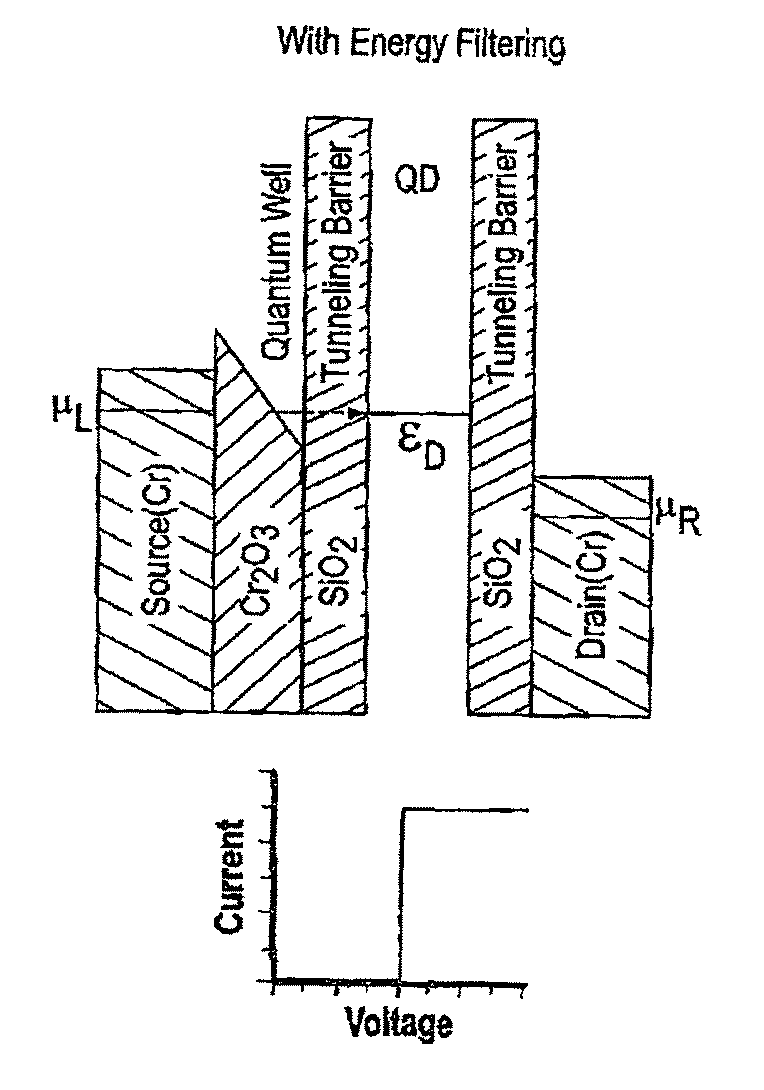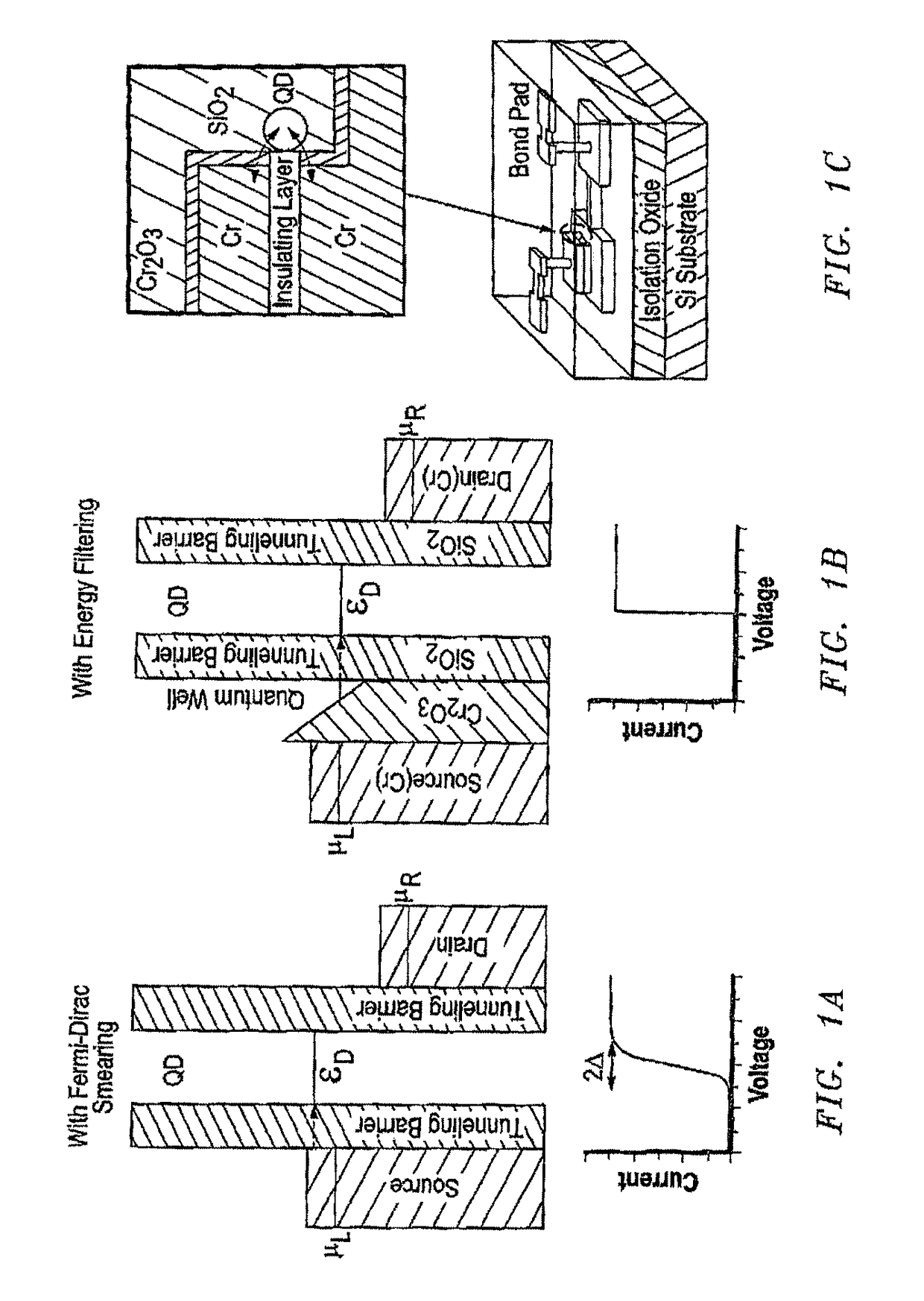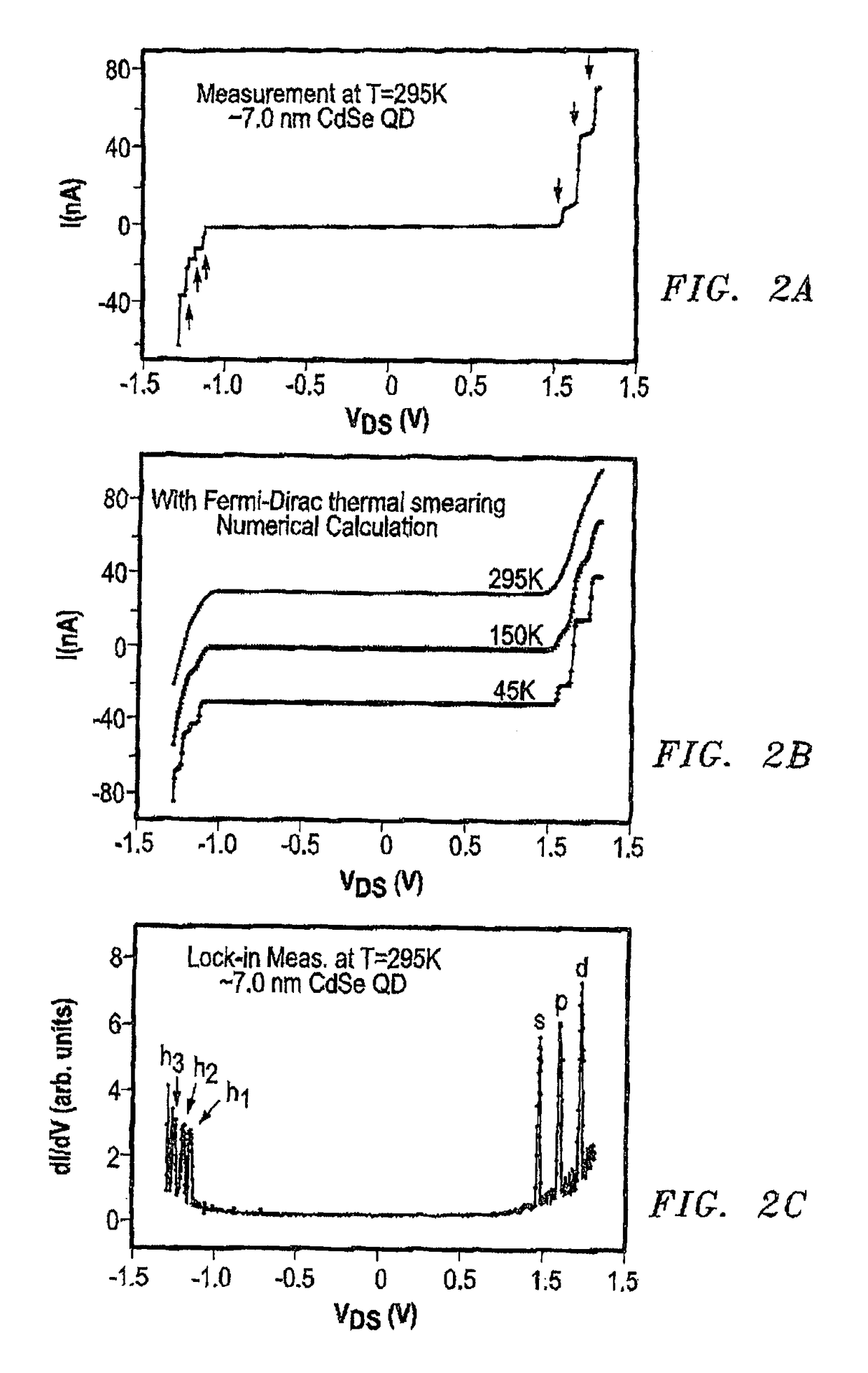Energy-filtered cold electron devices and methods
a technology of energy filtering and cold electrons, applied in the field of electromechanical devices and methods for ultralow power dissipation electronics, can solve the problems of excessive power dissipation, significant degrade the performance of more mainstream electronic devices, etc., and achieve the effects of effective suppression, reducing electron temperature, and reducing power dissipation
- Summary
- Abstract
- Description
- Claims
- Application Information
AI Technical Summary
Benefits of technology
Problems solved by technology
Method used
Image
Examples
Embodiment Construction
[0052]While the making and using of various embodiments of the present invention are discussed in detail below, it should be appreciated that the present invention provides many applicable inventive concepts that can be embodied in a wide variety of specific contexts. The specific embodiments discussed herein are merely illustrative of specific ways to make and use the invention and do not delimit the scope of the invention.
[0053]Transistors that can operate with extremely low energy consumption would generate a lot of applications for military, commercial, and space use. For example, if the power consumption of battery-powered electronic devices can be reduced by ˜100 times, without sacrificing the performance, the battery weight of an instrument would be able to be reduced by ˜100 times. This would tremendously increase the capability of numerous military equipment, examples including unmanned aerial vehicles (UAVs), remote communication devices, remote sensing devices, missiles, ...
PUM
 Login to View More
Login to View More Abstract
Description
Claims
Application Information
 Login to View More
Login to View More - R&D
- Intellectual Property
- Life Sciences
- Materials
- Tech Scout
- Unparalleled Data Quality
- Higher Quality Content
- 60% Fewer Hallucinations
Browse by: Latest US Patents, China's latest patents, Technical Efficacy Thesaurus, Application Domain, Technology Topic, Popular Technical Reports.
© 2025 PatSnap. All rights reserved.Legal|Privacy policy|Modern Slavery Act Transparency Statement|Sitemap|About US| Contact US: help@patsnap.com



